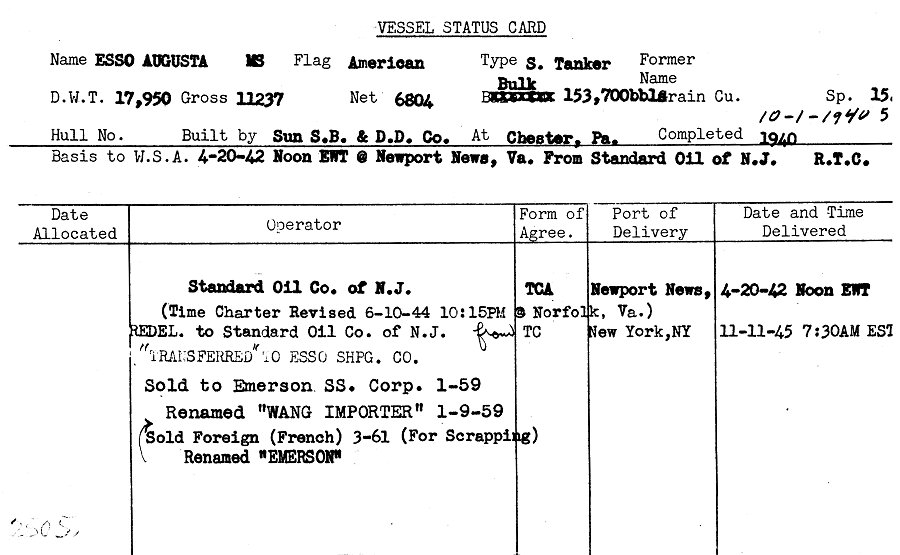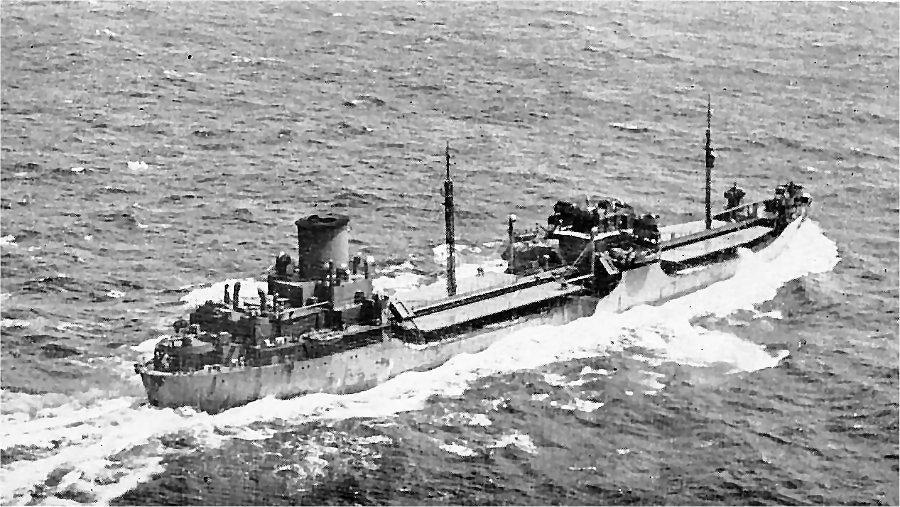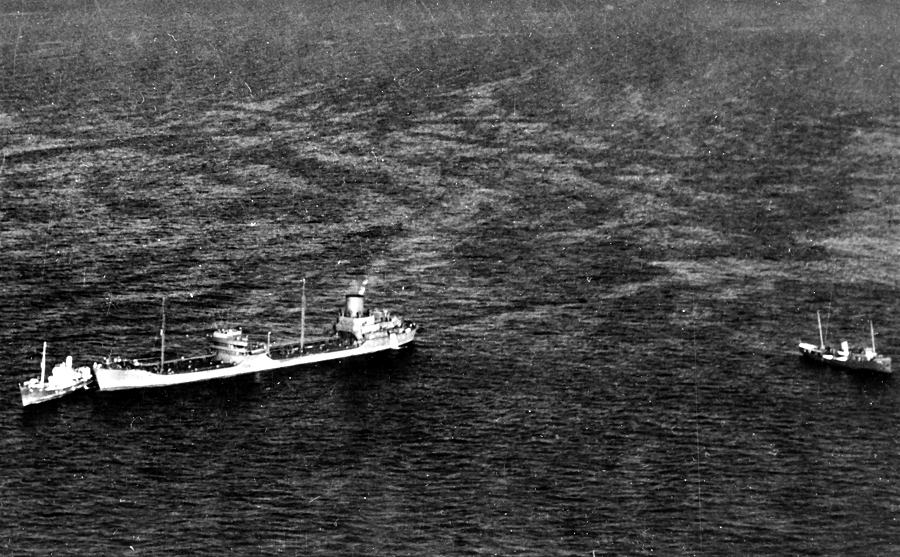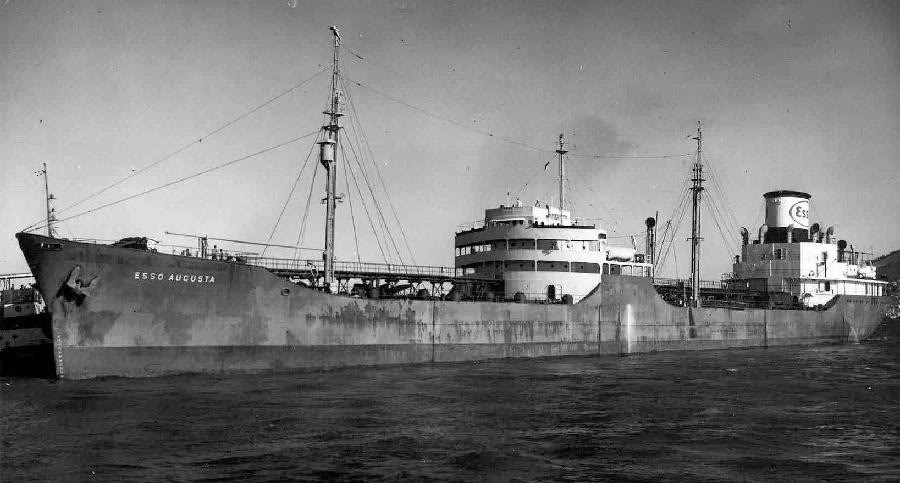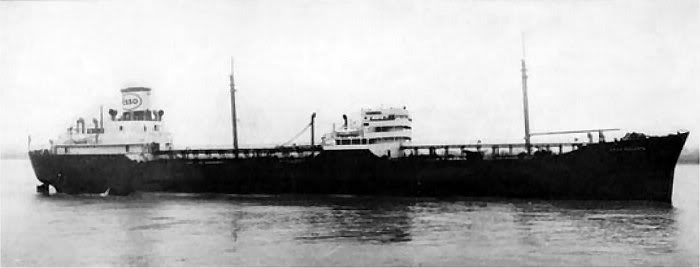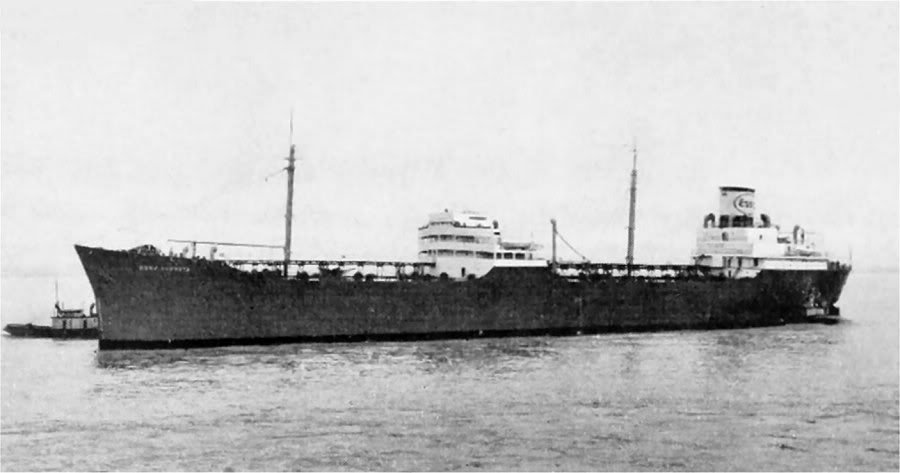Auke Visser's International Esso Tankers site | home
Esso Augusta (1) - (1940 -1959)
Seea also : America's Largest and Most Powerful Diesel- Drive Tanker & Building & Launch of the "Esso Augusta (1)"
You will be escorted to a remote site called Arnold Hague Ports database.
Click the Return button to return to the Esso site.
Thanks to Mike Holdoway webmaster of the Arnold Hague Ports database.
|
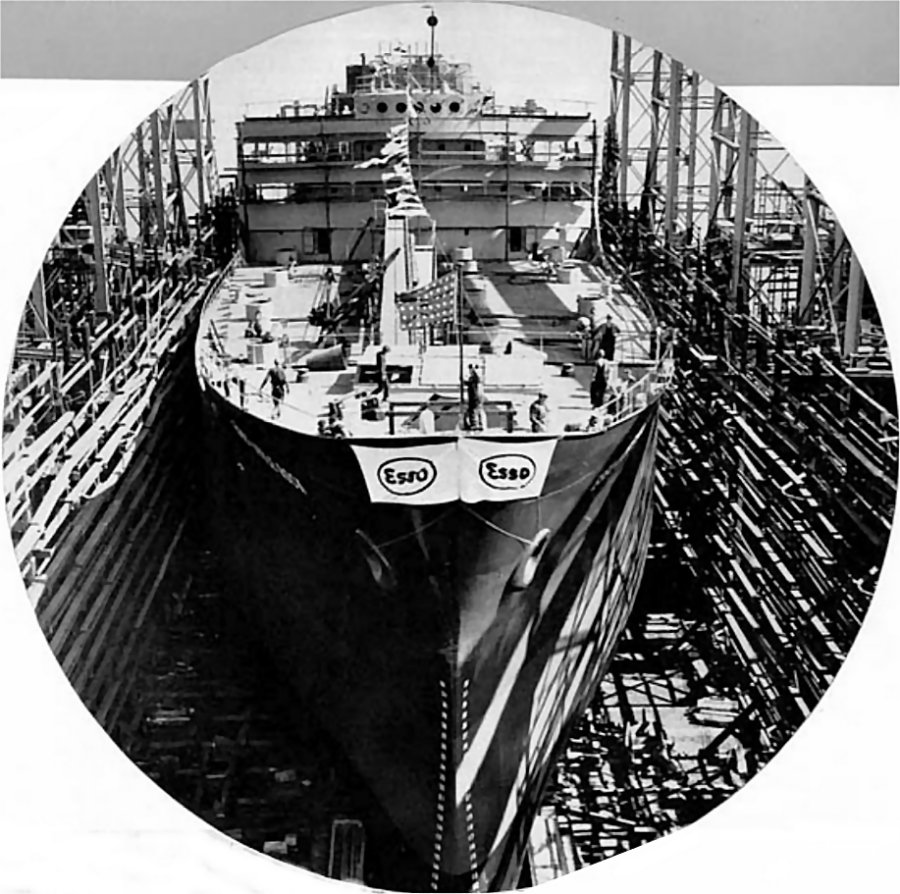
( Photo from the Sun Shipbuilding "Blue Book" )
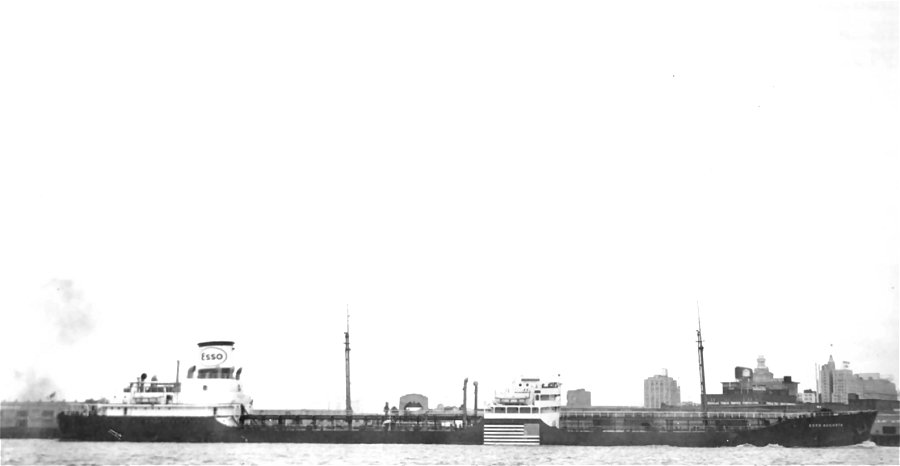
( Photo Copyright Reserved )
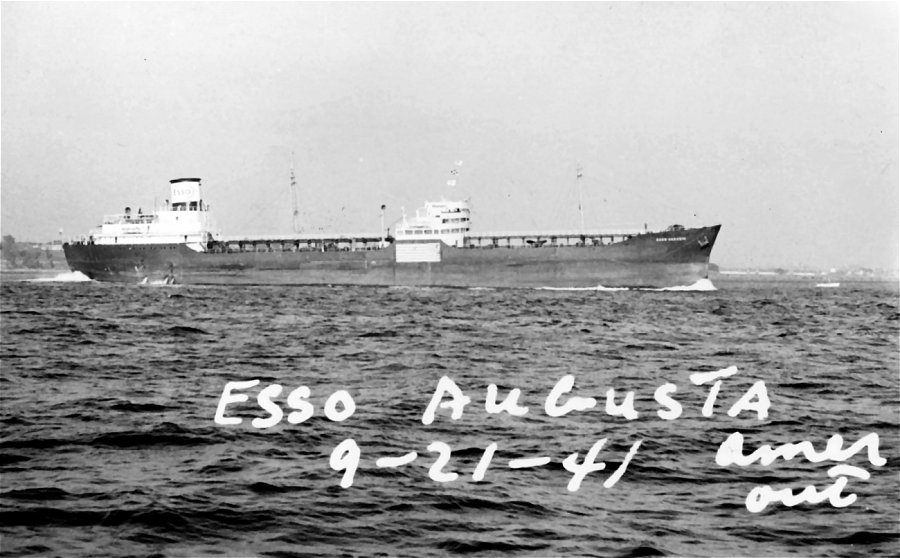
( Photo US Goast Guard )
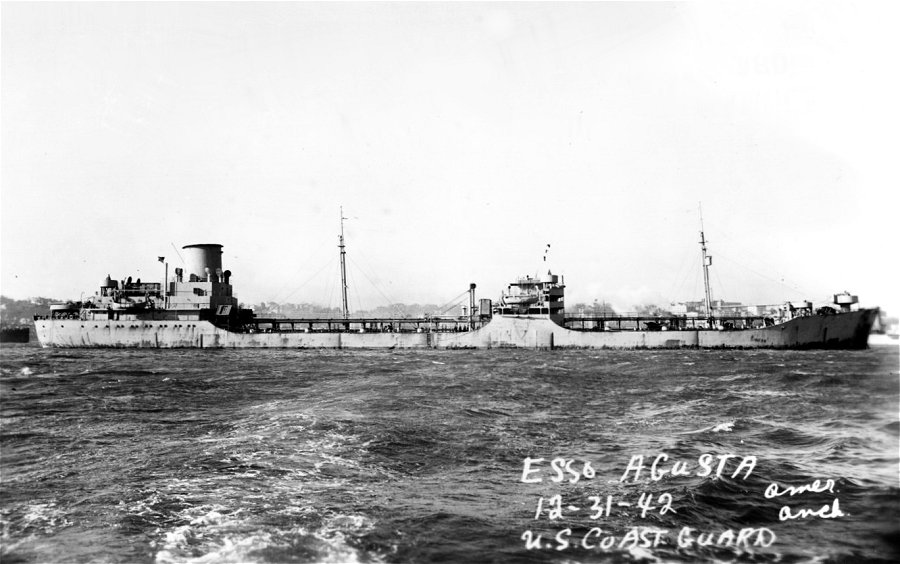
( Photo US Goast Guard )
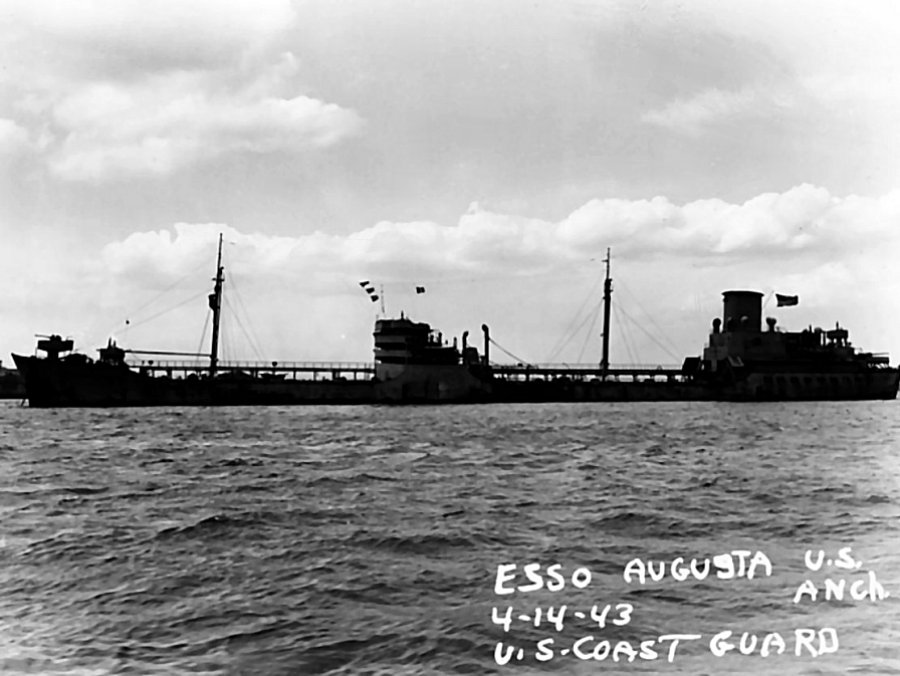
( Photo US Goast Guard )
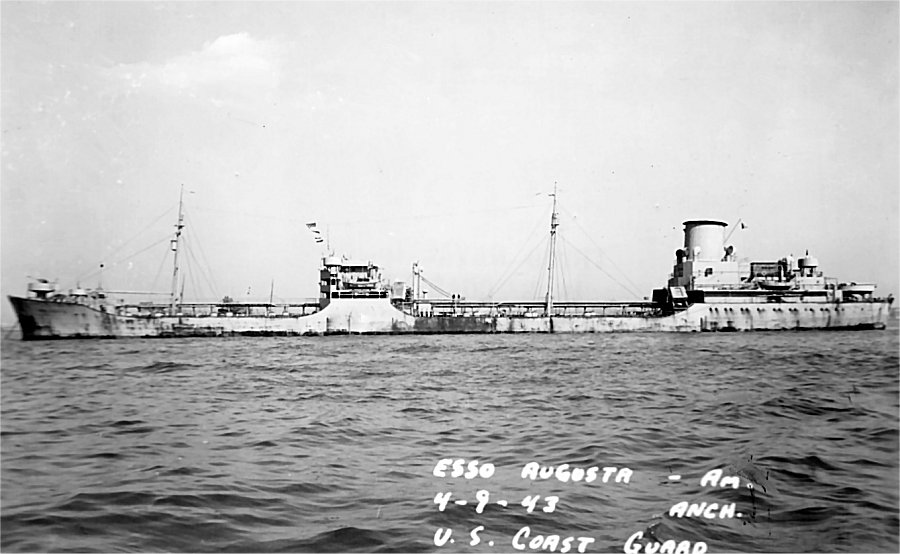
( Photo US Goast Guard )
Showing a "clean pair of heals" the "Esso Augusta" is a picture of speed and determination.
The victims of a minefield laid by U-701
U-701 laid 15 TMB (bottom mines laid from the boat's torpedo tubes - 7.5 feet long, carried a 1,276 pound explosive charge) in the aproach to Chesapeake Bay on during the night of June 11/12, 1942. In the late afternoon of June 15 Convoy KN-109, proceeding from Key West to Hampton Roads reached the the minefield. At 1702 local time the tanker Robert C. Tuttle struck a mine followed 31 minutes later by the Esso Augusta. It was believed at that moment that the ships had been torpedoed. The escorting destroyer USS Bainbridge (DD 246), searching for a possible submarine, detonated a mine at 1827 but remained afloat. The anti-submarine trawler HMS Kingston Ceylonite (FY 214), escorting a tug and tow up the coast struck a mine at 1927 sank in two minutes with 18 dead and 14 survivors. After minesweeping operations had found and detonated 9 more mines the port was put back in operation. On the afternoon of 17 June Convoy KS-511 was forming up when the coal ship Santore struck a mine and sank.
|
American tanker "Esso Augusta", (11,237 tons) struck a mine on the port quarter disabling her steering and propulsion.
She was towed into Norfolk the next day, repaired in Baltimore and returned to service. There were no casualties
"Esso Augusta".
"Esso Augusta".
"Esso Augusta".
The Miramar Ship Index for "ESSO AUGUSTA"
IDNo:
|
2240029
|
Year:
|
1940
|
Name:
|
ESSO AUGUSTA
|
Keel:
|
|
Type:
|
Tanker
|
Launch Date:
|
22.06.1940
|
Flag:
|
USA
|
Date of completion:
|
10.1940
|
Tons:
|
11237
|
Link:
|
-
|
DWT:
|
15261
|
Yard No:
|
195
|
Length overall:
|
Ship Design:
|
||
LPP:
|
159.9
|
Country of build:
|
USA
|
Beam:
|
21.4
|
Builder:
|
Sun
|
Material of build:
|
Location of yard:
|
Chester, Pa
|
|
Number of screws/Mchy/Speed(kn):
|
1D-15,5
|
||
Subsequent History:
1959 WANG IMPORTER
Disposal Data:
Scrapped at Trieste 01.1961. ( Laid up St Nazaire 01.1960 with engine damage ).
History :
ON
|
LR/IMO
|
ID
|
Year
|
Name
|
Tons
|
Change
|
Main Owner
|
240029
|
2240029
|
1940
|
ESSO AUGUSTA
|
11237
|
Standard Oil Co., NJ
|
||
240029
|
2240029
|
1940
|
ESSO AUGUSTA
|
11237
|
1950
|
Esso Sg Co.
|
|
240029
|
2240029
|
1940
|
WANG IMPORTER
|
11237
|
1959
|
N Atlantic Marine Co.
|
Sisterships are Esso Little Rock, Esso Williamsburg, Esso Philadelphia and Esso Pittsburg.
Additional Information from Uboat.net :
Name: Esso Augusta
Type: Motor tanker
Tonnage: 11.237 tons
Completed: 1940 - Sun Shipbuilding & Dry Dock Co, Chester PA
Owner: Standard Oil Co of New Jersey, New York
Homeport: Wilmington
Date of attack: 15 Jun, 1942
Nationality: American
Fate: Damaged by U-701 (Horst Degen)
Position: 36.52N, 75.51W - Grid CA 73
- See location on a map -
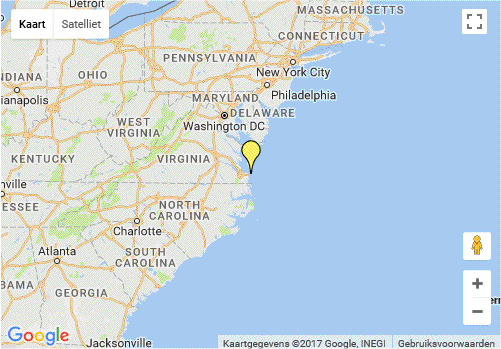
Complement: 57 (0 dead and 57 survivors).
Convoy: KN-109
Route: Texas City (4 Jun) - UK
Cargo: 119.000 barrels of diesel oil
History: -
Notes on loss:
On 15 Jun, 1942, the convoy KN-109 came into a minefield laid on 11 June by U-701 off Virginia Beach. The A/S trawler HMS Kingston
Ceylonite (FY 214) sank and the tankers Robert C. Tuttle and Esso Augusta, along with the destroyer USS Bainbridge
(DD 246) were damaged.
The Esso Augusta (Master Eric Robert Blomquist) traveled in the two column convoy in the lead station of the port column. At 23.04
hours, the Robert C. Tuttle struck a mine and thinking a U-boat had torpedoed the ship, the helmsman put the wheel hard right and
the master ordered full speed ahead on a zigzag course toward the safety in Chesapeake Bay. During the large circle to the right, an
explosion occured about ten feet off the port quarter less than one-half mile due south of Chesapeake Bay Entrance Lighted Whistle
Buoy. The blast disabled the main engines and the steering gear of the ship, blew of the rudder and stern post, burst steam and fuel
lines and broke auxiliary foundations. None of the crew of eight officers, 36 men and 13 armed guards (the ship was armed with one 5in,
one 3in, four .50cal and two .30cal guns) reported serious injuries and they did not abandon ship.
A tug was requested and three hours later the Keshena arrived and took the tanker in tow. Later the tug Coyote and another tug arrived
and together they towed the tanker to Norfolk, Virginia, arriving at the Esso dock the next day. Permanent repairs were made at
Baltimore, Maryland and she returned to service on 7 Nov, 1942.
Maritime Administration Cards:
